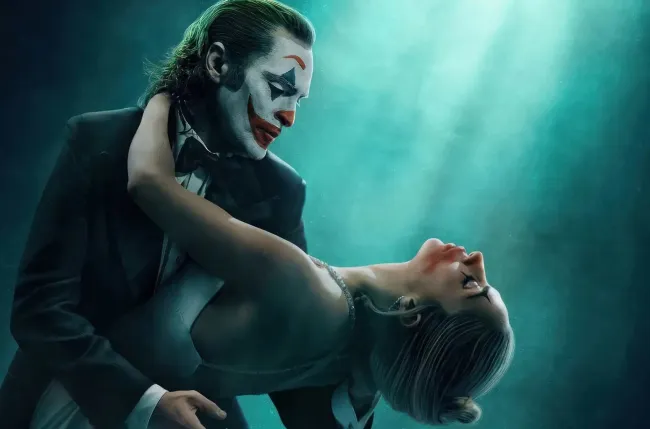“Joker: Folie à Deux” Review: A Disappointing and Uninspired Sequel
3 min read

Joaquin Phoenix returns to his iconic role as the Joker in “Joker: Folie à Deux,” a sequel to the 2019 hit that introduced his dark portrayal of the infamous supervillain. Despite the presence of Lady Gaga as his new accomplice, this follow-up fails to captivate, emerging as a disheartening and lackluster experience.
In the original “Joker,” directed by Todd Phillips, audiences were introduced to Arthur Fleck, a troubled man whose descent into madness culminates in his transformation into the Joker. The film delved deeply into his grim origins, depicting his troubled childhood, mental health struggles, and eventual spree of violence that incites chaos in Gotham City. Despite this intense character study, the film left viewers waiting for the Joker to fully embrace his villainous persona, with the narrative stopping short of showcasing his criminal exploits and confrontations with Batman.
“Joker: Folie à Deux,” co-written by Phillips and Scott Silver, was an opportunity to explore more of the Joker’s notorious antics. However, the sequel surprisingly shifts focus away from the criminal elements that define the Joker, instead continuing to explore Fleck’s backstory. This creative choice, while bold, results in a film that feels like a drawn-out and dreary extension of the original.
The film splits its narrative between two primary settings: Gotham’s Arkham Asylum, where Fleck is languishing as an inmate, and the city’s courtroom, where his sanity is being debated. This approach offers a glimpse into the Joker’s life behind bars and the legal proceedings surrounding his mental state. Unfortunately, this setting contributes little to the excitement or development of the character. In Arkham, Fleck is subjected to the taunts of a guard (Brendan Gleeson) and interviews with a TV reporter (Steve Coogan). In court, his lawyer (Catherine Keener) argues with the district attorney (Harry Lawtey) over whether Fleck and Joker are distinct personalities. While the appearance of Harvey Dent (hinting at his future as Two-Face) might be a nod for comic fans, it does little to enhance the film’s appeal.
The film introduces a new character, Lee Quinzel, portrayed by Lady Gaga. Lee, a reimagined version of Harley Quinn, encourages Fleck to embrace his Joker persona once more. However, her role as Fleck’s partner is more of a distraction than a compelling addition. Lee and Fleck’s musical performances, featuring romantic standards and elaborate fantasies, seem out of place in the dark, gritty world established by the first film. Gaga’s powerful vocal performances contrast sharply with Phoenix’s less effective singing, and these musical interludes disrupt rather than advance the plot. Instead of adding depth, they highlight the film’s lack of substantial narrative progression.
Ultimately, “Joker: Folie à Deux” feels like a missed opportunity. The film’s attempts at exploring Fleck’s character further, while noble, fall flat. Phillips seems to be addressing the way the character was received in the first film, where some viewed him as a revolutionary figure while others saw him as a tragic figure. In this sequel, Phillips appears to intentionally demystify Fleck, portraying him as a self-pitying and ineffective individual. This approach can be seen as either a daring reinterpretation or an overly cynical response to audience expectations, but it certainly lacks the engaging quality that made the original film compelling.
Overall, “Joker: Folie à Deux” is a disappointment, not living up to the promise of its predecessor. The film’s lack of a cohesive and engaging plot, coupled with its unremarkable musical numbers, leaves it feeling like a lengthy and unnecessary exploration of a character who, in this installment, seems less intriguing and more insipid.